“Under the seams runs the pain.”
― Anne Carson, Autobiography of Red
I’ve been going over my notes the past couple months from Dr. Alejandro de Ávila’s remarkable lecture “Blood on a Fountain,” which he gave this past January at the University of California Botanical Garden at Berkeley’s final “Natural Discourse” symposium, trying to shape the notes into digestible bites for the blog. Now going on three months, with still nothing to show, you can see how much success I’ve had. As founding director of The Ethnobotanical Garden of Oaxaca (Jardín Etnobotánico de Oaxaca), anthropologist Dr. de Ávila covered vast amounts of historical, political, geological, cultural, social and botanical ground in his introductory lecture on the creation of the garden, all of it suggesting intriguing avenues for further exploration. For the moment, I’ve decided to focus on the story of cochineal, which on its own illuminates quite a bit of the site’s evolution from Dominican monastery to military garrison to now the Jardín Etnobotánico de Oaxaca.

Alejandro de Ávila, founding director, Jardín Etnobotánico de Oaxaca
photo from Garden Design
The title of Dr. de Ávila’s lecture, “Blood on a Fountain,” suggestive as it is of past crimes against indigenous peoples, instead speaks more to the powerfully creative interplay between culture and landscape.

In particular, the “blood” on the fountain alludes to the remarkable story of the domestication of an insect and its host cactus from which the coveted red dye cochineal is extracted, a red dye far superior to any in use at the time in the Old World of the 16th century.
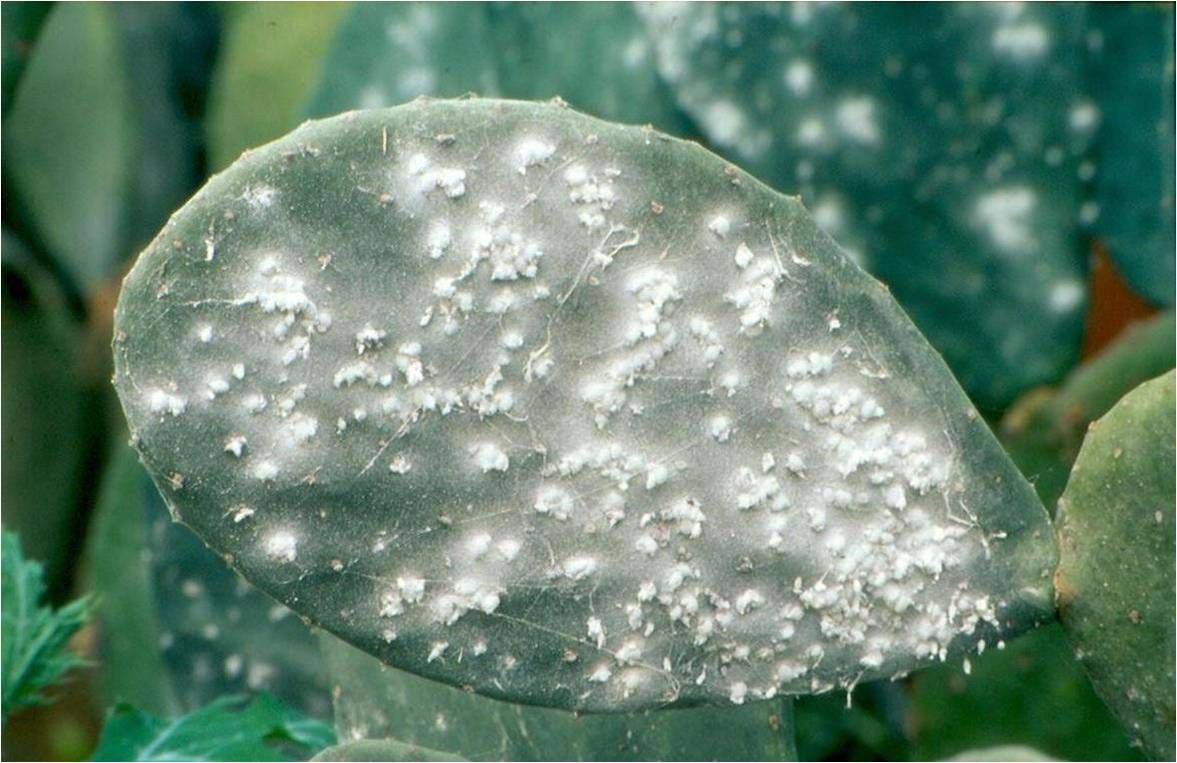
scale insect on opuntia pad
From their first awestruck encounter with cochineal in the rich, deep reds of the garments and art of the people of the New World, the Spanish conquistadors were determined to paint Spain in this new technicolor hue. For the next 300 years, the voyages of countless Spanish galleons were launched because of an inexhaustible demand for a tiny insect with transformative, alchemical properties, Dactylopius coccus, a scale insect that preys on the prickly pear, Opuntia ficus-indica. And only the Indians knew the secrets to unlocking those sanguineous properties.

collecting cochineal
The laborious, painstaking methods involved in raising, protecting, and then harvesting the scale proved to be the Indians’ salvation, exempting them from the harshest aspects of colonial rule. Slave labor, something the Spanish were not morally averse to, was not economically feasible in the production of cochineal for many reasons. The slow, meticulous work was mostly accomplished by women, children and the elderly, and the costs of feeding the workers was too high balanced against profit. As a fortuitous result, instead of slavery, the land was granted to the indigenous people. Thanks to cochineal, today Oaxaca is the rare exception in Latin America, where instead of state-owned land, 70 percent of the land is owned by the indigenous communities.
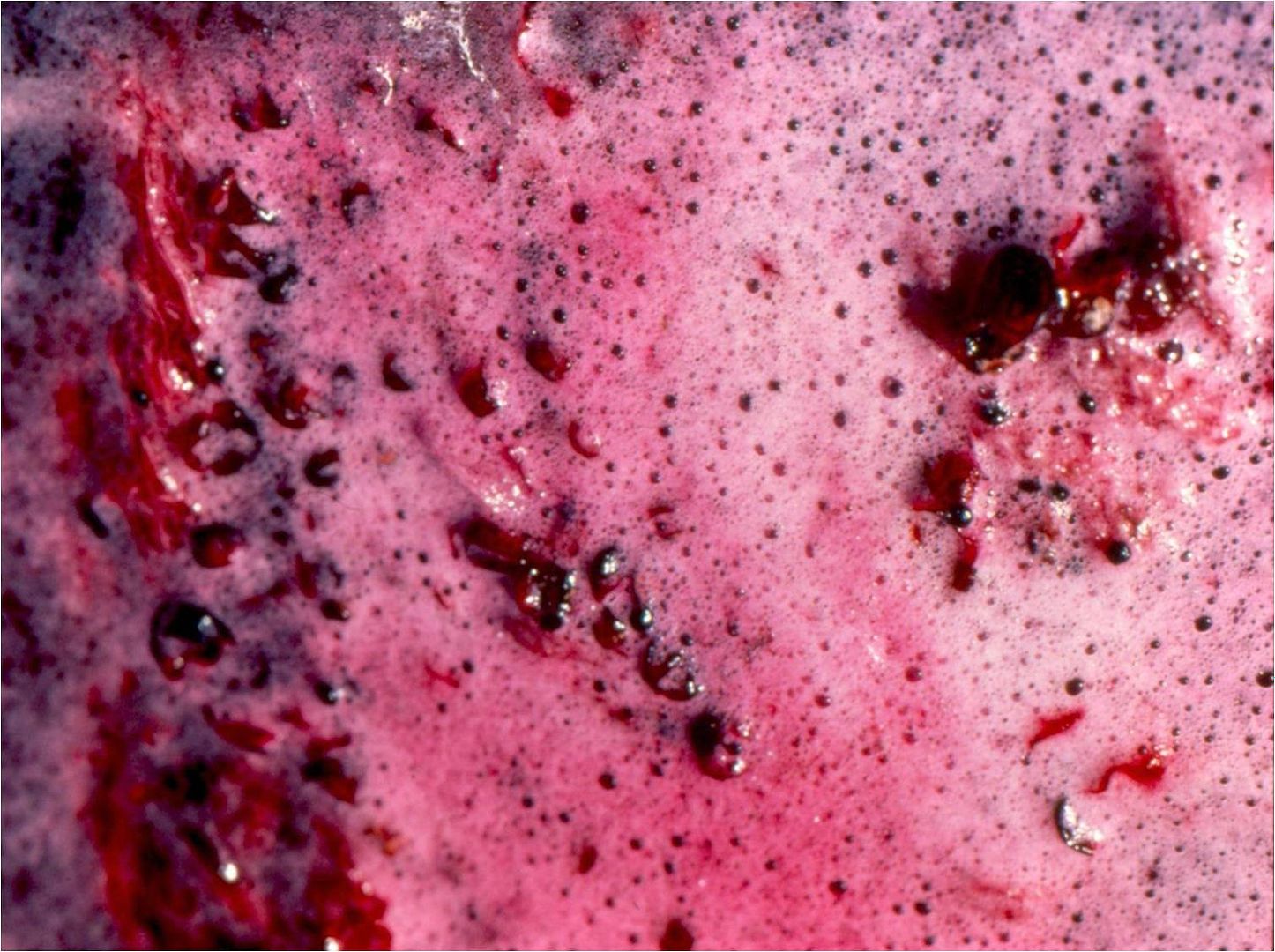
If you squeeze this scale between your fingers, your skin will stain red. The scale exudes carminc acid, which is very stable chemically. Varying methods of killing the insects and extracting the dye were employed. Indians domesticated the insect, selecting traits for properties conducive to making the dye, such as minimizing the insect’s natural waxy coating. Likewise, the cactus was domesticated, showing an understandable preference for thornlessness.
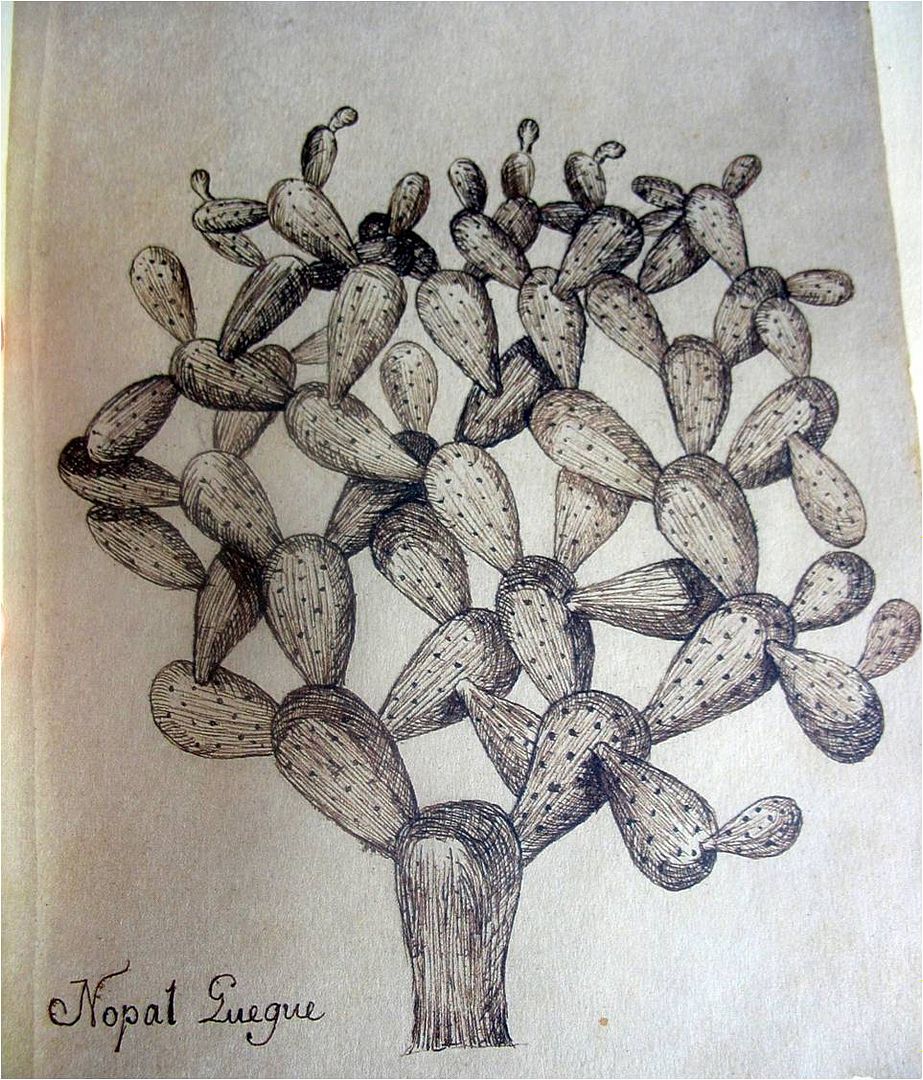
Upon its export back to the Old World, cochineal was responsible for coloring crimson the robes of powerful clerics, electrifying the paintings of, among others, El Greco, and putting the vivid red in the Red Coats of the British Empire. It became second only to silver as the most valued export from the New World. And the center of cochineal’s production was Oaxaca. Oaxaca became the richest city in Mexico based on its export of cochineal. A Dominican monastery was built on the garden’s current site, paid for by the wealth generated from the cochineal trade, which the Dominicans encouraged. Thus was another strata of influence, the religious, incorporated into the multilayered story of cochineal.
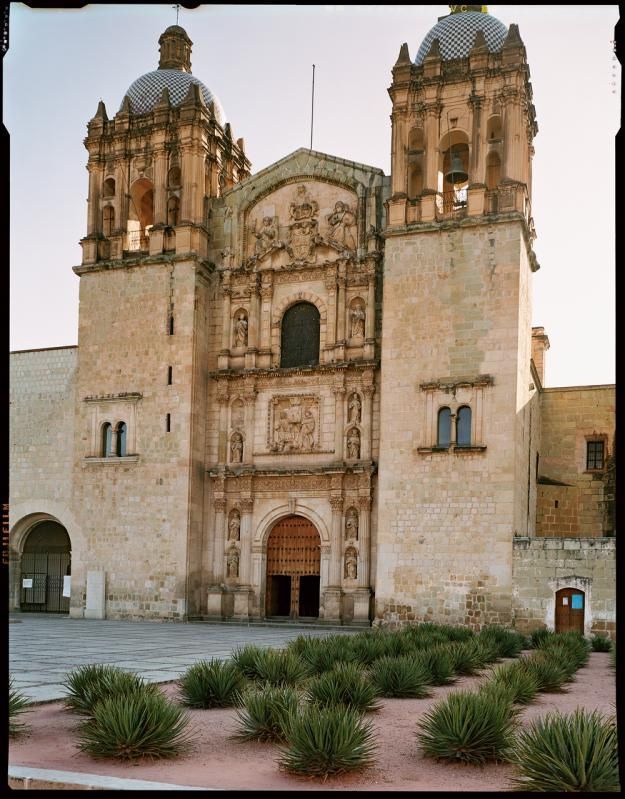
Church of Santo Domingo de Guzmán
photo from Garden Design
By the late 1800s, synthetic dyes were invented, and the market for cochineal vanished almost overnight. In time the Dominican monastery came to be used as a military garrison. After 100 years as a garrison, one of Mexico’s best-known living artists, Francisco Toledo, successfully lobbied the government to evict the garrison. There were differing opinions about the best use of the 5-acre site. De Ávila’s asked: Why sacrifice a privileged site next to a historic building, when you can integrate a much more significant discourse? He proposed a living museum that would depict the whole of human experience in Southern Mexico, from hunter-gatherers to transnational modern migratory workers. De Ávila wanted the botanical garden to not just contain beautiful plants but to elucidate the links to the surrounding landscape that account for the shaping of this specific cultural history. Francisco Toledo ultimately supported de Ávila’s vision.
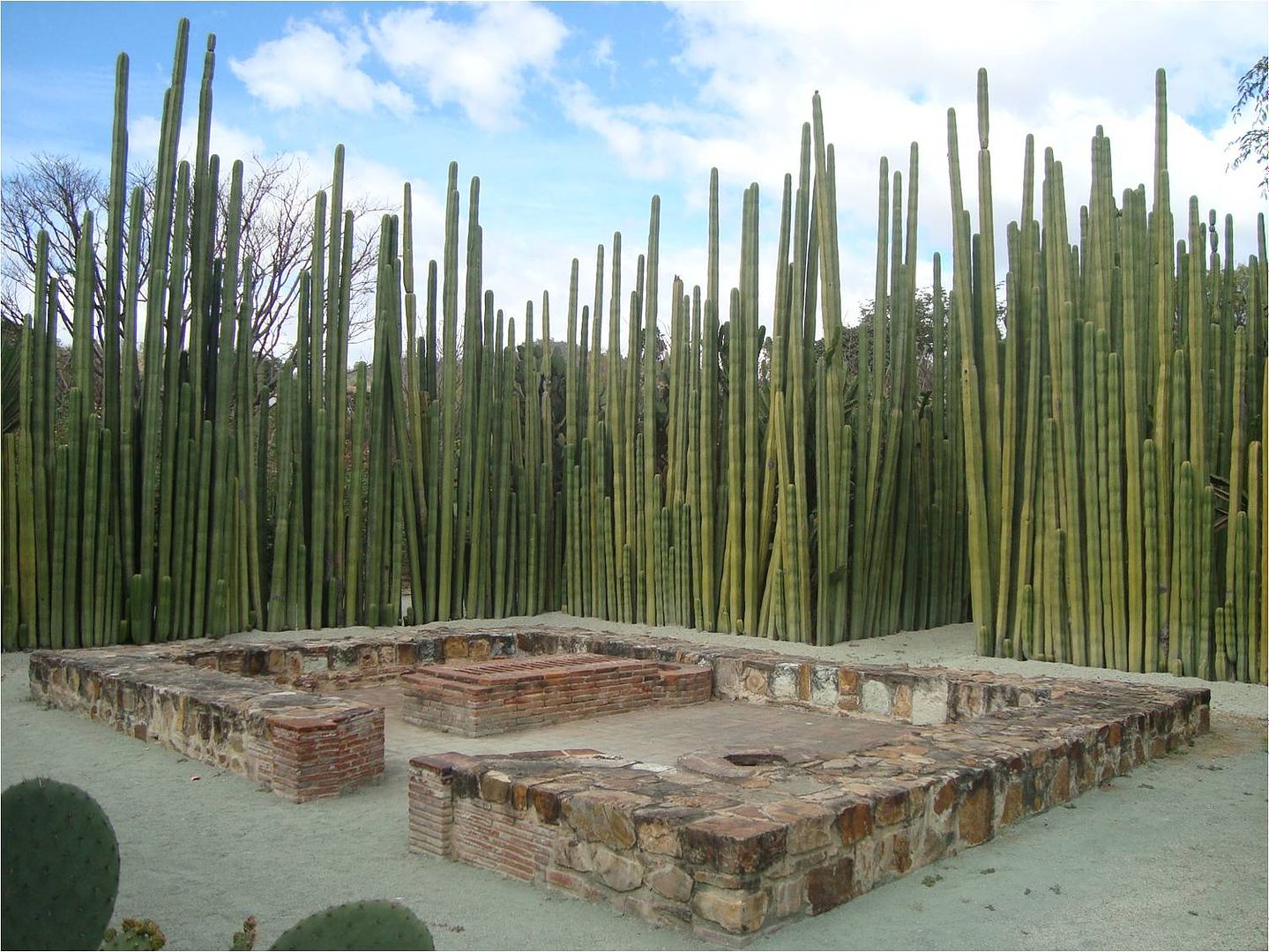
The now-iconic image of the rows of organ pipe cactus, Stenocereus marginatus, refers to their use as barriers, enclosing and protecting the opuntia and its precious symbiotic cargo of scale insects from marauding cattle, chickens and turkeys.
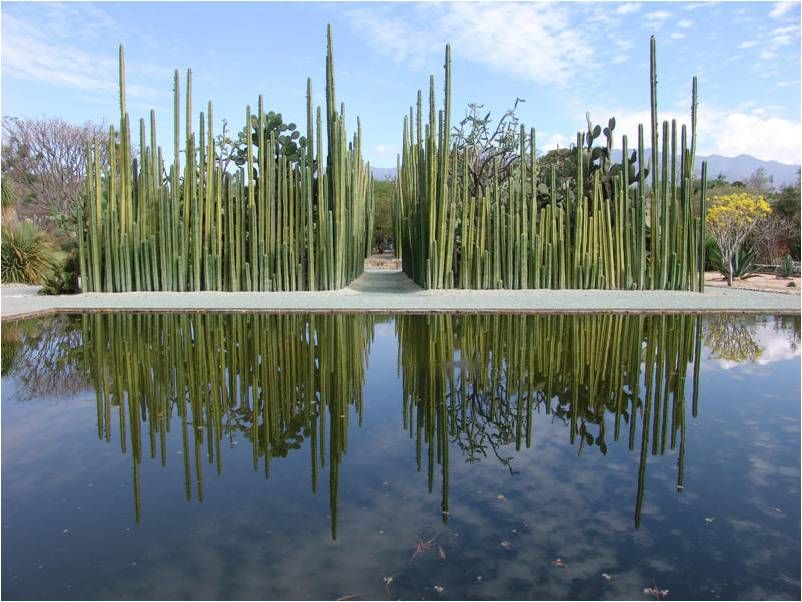
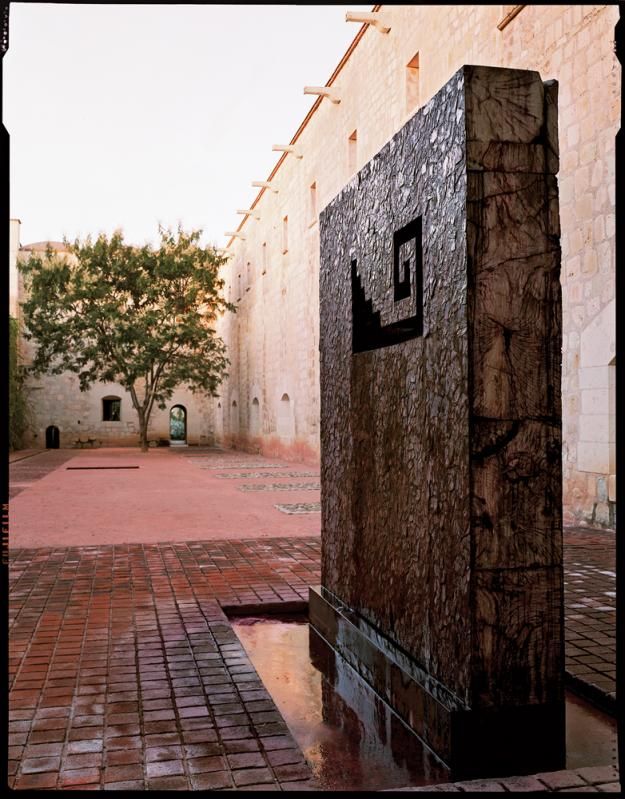
photo from Garden Design
Clues to cochineal’s importance to Oaxaca are repeated over and over at Jardín Etnobotánico de Oaxaca, most dramatically in the fountain designed by Francisco Toledo. Four trunks of the Oaxacan giant tree Taxodium mucronatum, the Montezuma cypress, were used for the fountain. The shimmering coating is mica, a locally mined mineral chosen for its geological significance as well as its importance as a commodity traded by the pre-Columbian people of the ancient Oaxacan city of Monte Alban, credited as being the first true city of the Americas. A network of tiny canals was perforated through the four slabs so water would flow evenly. The fountain runs red, the color of cochineal. The stepped pyramid and meander design similar to the Greek key is carried over into the various structures and layout of the garden.
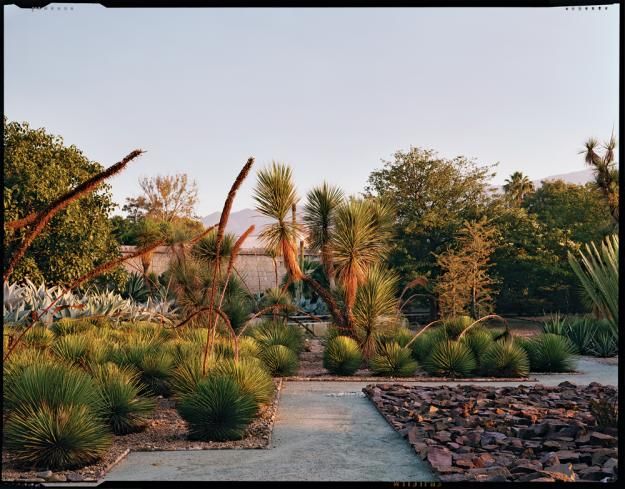
photo from Garden Design
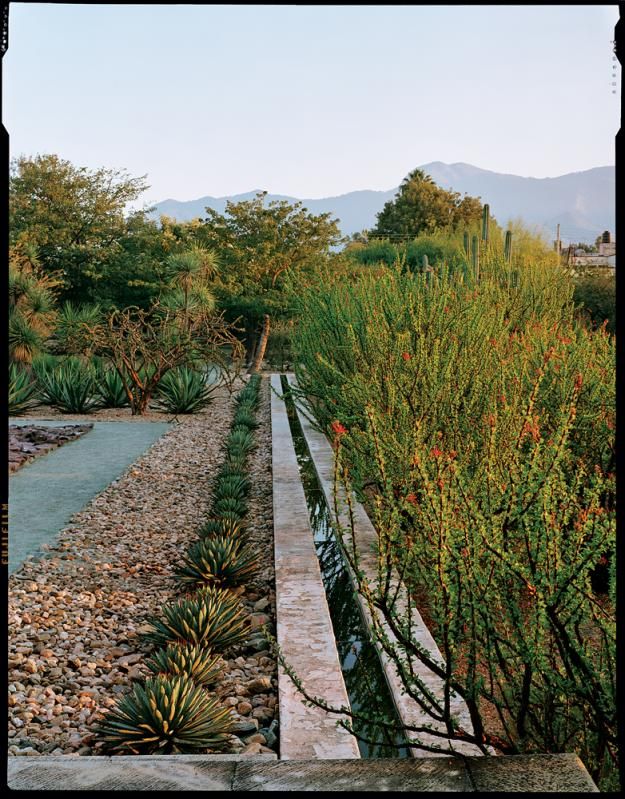
photo from Garden Design
The design of the garden flows from its history. No landscape architects were consulted.



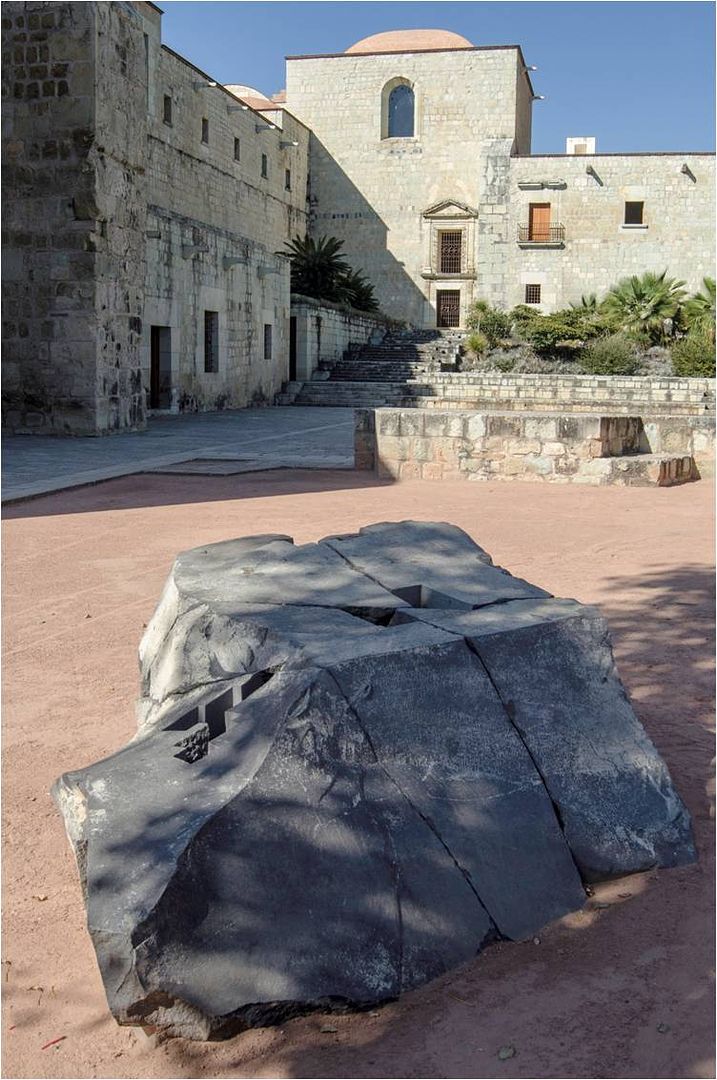
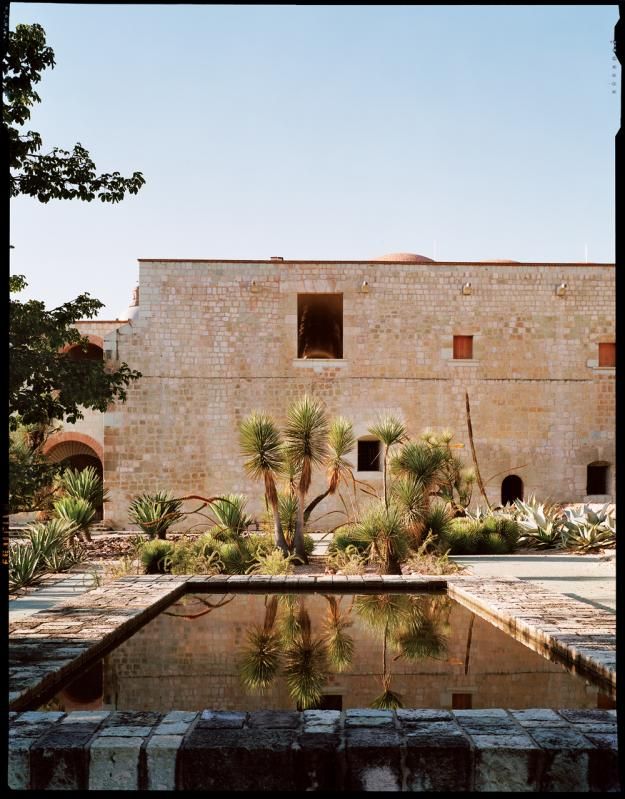
photos from Garden Design

In another twist of history, the suspected carcinogenic properties of synthetic dyes are bringing about a small resurgence in the production of cochineal. Now that I’ve learned of the ancient story of cochineal, I’m suddenly finding it referenced everywhere, like in this color study by artist Helen Quinn. And Amy Stewart mentions cochineal in The Drunken Botanist.
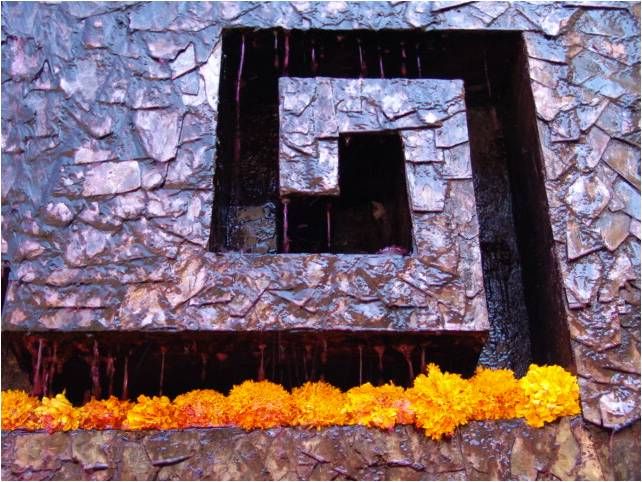
Thanks to both Dr. Alejandro de Ávila and UCBG’s Natural Discourse for this introduction to the making of the Jardín Etnobotánico de Oaxaca, “Blood on a Fountain,” a botanical garden I can’t wait to visit.

It is nice to see an accurate and historical blog post about cochineal instead of the typical “OMG we are eating crushed beetles when we eat something with red food coloring!”
Kaveh, most of us would be shocked at how many bugs make it into our food chain. Yeah, I didn’t emphasize that point too much, bugs in lipstick, etc.
Fabulous!
“…attention span this busy spring is in tatters…” I’m thoroughly tattered myself.
Loved every bit of this and will need to read it another time or three.
@Hoov, aren’t long pieces are hard to read (and write!) in spring?
@Loree, I loved it too, what with the opuntia, the organ pipe cactus, and the Montezuma cypress as major characters in this drama. Agaves also had a big part to play, but that’s another story…
Such a great post! This garden definitely looks like one worth visiting. Great history too!